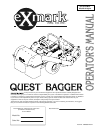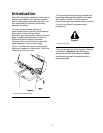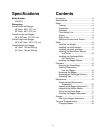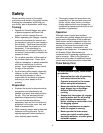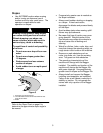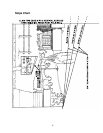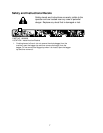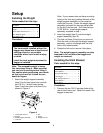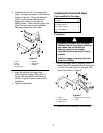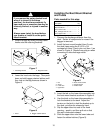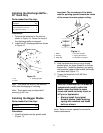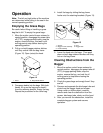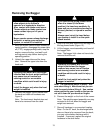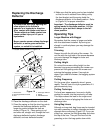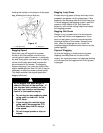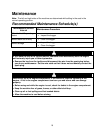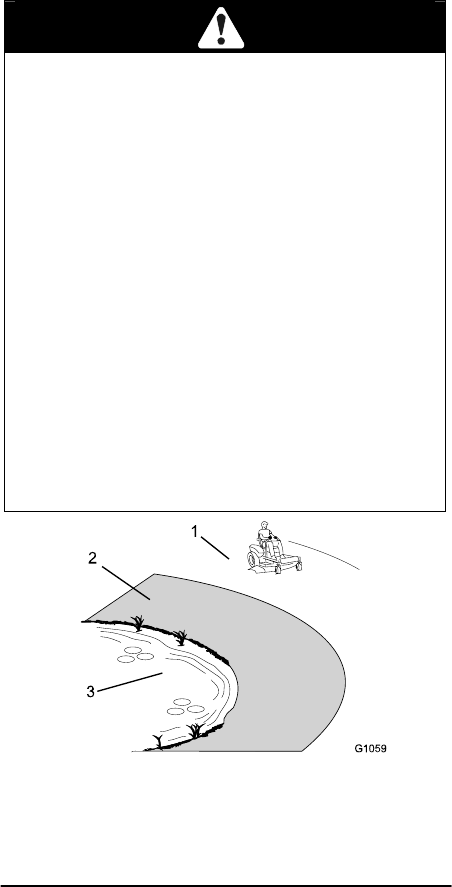
5
Slopes
• Use EXTREME caution when mowing
and/or turning on slopes as loss of
traction and/or tip-over could occur. The
operator is responsible for safe
operation on slopes.
Mowing on wet grass or steep slopes
can cause sliding and loss of control.
Wheels dropping over edges can
cause rollovers, which may result in
serious injury, death or drowning.
To avoid loss of control and possibility
of rollover:
• Do not mow near drop-offs or near
water.
• Do not mow slopes greater than
15 degrees.
• Reduce speed and use extreme
caution on slopes.
• Avoid sudden turns or rapid speed
changes.
Figure 3
1. Safe Zone-use the Quest here.
2. Use walk behind mower and/or hand trimmer near
drop-offs and water.
3. Water
Refer to the Slope Chart on page 6 to
determine the approximate slope angle to
be mowed.
• Progressively greater care is needed as
the slope increases.
• Always avoid sudden starting or stopping
on a slope. If tires lose traction,
disengage the blades and proceed slowly
off the slope.
• Avoid sudden starts when mowing uphill.
Mower may tip backwards.
• Be aware that loss of traction may occur
going downhill. Weight transfer to the
front wheels may cause drive wheels to
slip and cause loss of braking and
steering.
• Watch for ditches, holes, rocks, dips, and
rises that change the operating angle, as
rough terrain could overturn the machine.
• Remove or mark obstacles such as
rocks, tree limbs, etc. from the mowing
area. Tall grass can hide obstacles.
• The operating characteristics of the
machine will change with the Bagger
installed. The stability and traction of the
machine will change as the Bagger fills
with grass clippings. Use progressively
greater care on slopes as the Bagger fills.
• Always install and remove the Bagger,
including counterweights, as instructed.
Failure to do so will cause a reduction in
stability or traction. Do not operate the
mower with only a portion of the Bagger
installed.



